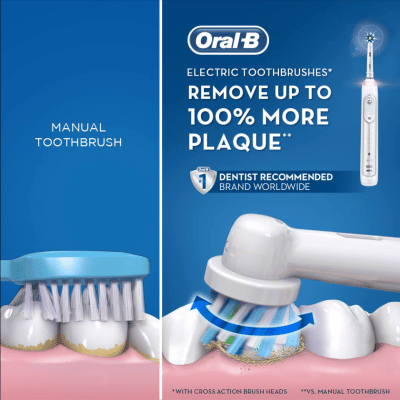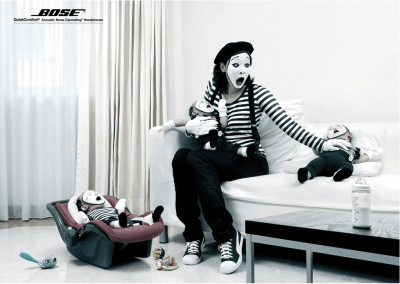The Bottom Line Up-Front:
New research shows that emotion increases memorability — for the emotional aspects of the ad, but NOT for the ad’s brand messaging.
In contrast, metaphor increases memorability for both the ad AND the brand messaging within the ad.
So if you want people to remember your ad AND your messaging, use metaphor.
Understanding the Details
A recent study published in The Journal of Advertising examined the role of metaphors in improving advertising memory.
This study analyzed three different types of ads:
- Functional Ads, which provided rational benefits, features, and reasons-why for the advertised product. An example of a functional ad can be seen below:

- Emotional Ads, aimed at showcasing emotional imagery only tangentially related to product features. An example of an emotional ad can be seen below:

- Metaphorical Ads, which connected products and emotional benefits or imagery through metaphor (or simile). Two examples of metaphorical ads can be seen below:


So 60 people were shown 60 different ads, twenty ads for each category of functional, emotional, and metaphorical.
After their initial viewing of the ads, the participants were tested to see how well they remembered them. Tests included both simple recall as well as identification of the brands and taglines.
Then their memory of the ads was re-tested after one week. And this time participants were tested while hooked up to an fMRI machine.
The Results
Despite participants spending more time looking at the functional ads, they actually had better recall of the emotional and metaphorical ads.
And during the initial recall testing, done immediately after exposure, there was no difference between emotional and metaphorical ads.
Yet when participants returned for recall testing a week later, there was a significant difference.
Participants remembered the emotional ads much better than the logical ads, as before.
In fact they could offer vivid recall of the most affecting imagery within the ads — but they were confused and hazy on important details of brand messaging.
They recalled the emotional premise of the emotional ads, but not the brand messaging that was supposed to be attached to it.
For example, participants might recall the example ad featuring two young girls palling around some European city and getting caught in the rain, but they’d have no memory of the ad being for American Eagle Outfitters.
In contrast, the metaphorical ads produced high recall for the ad itself as well as the associated brand messaging.
They not only recalled the ad featuring the mimes, but they also remembered that it was an ad for Bose Quiet Comfort Headphones.
And this difference in recall could be seen in the fMRI brain scans.
Metaphorical ads required participants to more actively think about the imagery and headlines in the ad to find the metaphorical bridge of meaning between them and grasp the overall message.
So when looking at the example metaphorical ad above, a participant might process:
Why is that mom and her crying babies wearing mime costumes? Oh! The ad is for Bose noise canceling headsets, which effectively turns crying babies into mimes…
Reaching for this metaphorical understanding forced participants to further process the ad, and that added engagement increased recall of the brand and product messaging.
The Takeaway
Emotionally engaging advertising is great. But attaching that emotion to your messaging is the real trick.
And it’s a trick that’s easily accomplished through metaphor, which naturally bridges from emotion to meaning.
So if you want people to not only remember the ads, but the messaging as well, use metaphor.
For print ads, that doesn’t necessarily mean a metaphor-driven headline.
In fact, visual metaphor often proves far more immediate, engaging, and hard-hitting.
And it’s the same for radio ads. Metaphorical language is fine, but it’s not as powerful as an overall premise based on deep metaphor.
Just listen to this ad below.
Here’s the ad’s script, as written by Roy H. Williams [paragraphing and bolding mine]:
“You are standing in the snow, five and one half miles above sea level, gazing at a horizon hundreds of miles away. It occurs to you that life here is very simple: You live, or you die. No compromises, no whining, no second chances. This is a place constantly ravaged by wind and storm, where every ragged breath is an accomplishment.
You stand on the uppermost pinnacle of the earth. This is the mountain they call Everest. Yesterday it was considered unbeatable. But that was yesterday.
As Edmund Hillary surveyed the horizon from the peak of Mount Everest, he monitored the time on a wristwatch that had been specifically designed to withstand the fury of the world’s most angry mountain. Rolex believed Sir Edmund Hillary would conquer the mountain, and especially for him they created the Rolex Explorer.
In every life there is a Mount Everest to be conquered. When you have conquered yours, you’ll find your Rolex waiting patiently for you to come and pick it up at Justice Jewelers.
I’m Woody Justice, and I’ve got a Rolex for you.”
If you look at the ad, you’ll find a bit of figurative language hear and there — “the fury of the world’s most angry mountain” — but it’s not overflowing with surface level metaphors in it’s script.
The emotional power of the ad comes from the premise of its deep metaphor, made explicit in the bolded part of the ad.
Moreover, note that the ad didn’t start out with a metaphor.
The ad started out with a story. In fact, the ad started out by putting you on the scene of a story in media res.
You were drawn into the scene, then into the story, and only then was the story made directly meaningful for your life through metaphor.
And that’s how it’s done.
- Are You Paying for Too Much for the Wrong Keywords? - July 15, 2024
- Dominate Your Market Like Rolex — 4 Powerful Branding Lessons - July 3, 2024
- Military-Grade Persuasion for Your Branding - June 25, 2024



